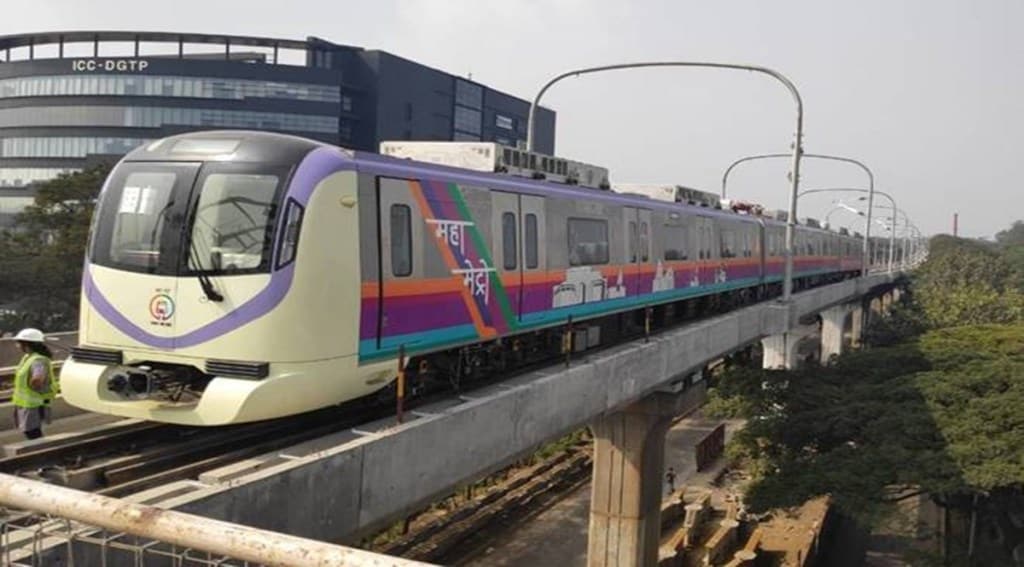Pune’s real estate market is set for a boost with the launch of the Pune Metro rail services. The launch of metro operations is expected to boost real estate development along the metro corridors in the city. Realty projects are taking off to leverage this new mass transport infrastructure and drive the next phase of growth in Pune’s real estate with a higher floor space index (FSI) allowed in these areas.
A 12-km stretch of the Pune Metro was launched on Sunday and the metro rail network is expected to expand further to reach all corners of the city.
The city is all set for vertical growth along the metro corridor, says Anil Pharande, chairman of Pharande Spaces, a realty company and president, CREDAI- Pune Metro. The transit-oriented development (TOD) policy allows higher FFSI and higher population density in the 500-meter radius of the metro stations. While the Maharashtra government had announced an FSI of 4 along TOD zones within a 500-metre radius, Pharande says for realty projects to take off in the TOD zone, the government would have to modify some of the rules to make it more viable and affordable for buyers.
MahaMetro Corporation, the company implementing the Pune Metro, is planning to develop 9.54 million sq. ft of commercial space along the Metro corridor with property development projects coming up at Swargate (1.99 million sq ft), Civil Court (1.92 million sq ft), Range Hills (3.4 million sq ft) and Hill View Vanaz (2.2 million sq. ft) stations.
Among the first metro-connected offices would be Gera Developments’ Imperium Gateway. It has a mix of offices, retail and F&B spaces. According to Rohit Gera, managing director, Gera Developments, the project sold 500 office and shop units within 45 days of launch. This is a two million sq. ft project on a 12-acre plot acquired for `160 crore in Kasarwadi along the Mumbai-Pune Road, located right next to the Metro Station. Gera expects the stations to guide the development of commercial space in Pune. Offices next to metro stations is a great play, especially at a time when fuel prices are surging and the Metro offers an alternative way of commuting to work, Gera said.
Rahul Talele, group CEO, Kolte-Patil Developers, among the largest real estate developers in Pune, said they were enthused with the launch of Metro services and have planned launches in the next few quarters with a total saleable area of 4.85 million sq. ft. “We believe it will provide a fillip to the economic ecosystem of one of the most liveable cities in India,” Talele said.
The Kohinoor Group is developing a Rs 2,100 crore 1.8 million sq. ft. Kohinoor World Towers project in the Pimpri Chinchwad area. “Pune metro has been planned and designed taking into consideration issues of parking and public transportation needs for the next 10 years at the stage of planning itself. So there will be a lot of commercial developments, especially in the areas of Pimpri-Chinchwad, Kalyani Nagar and Baner. These are the upcoming residential and commercial zone in Pune,” Goyal said.
Paramvir Singh Paul, branch director – Pune, Knight Frank India said with increased connectivity and additional FSI along the Pune metro line, the consumers were likely to benefit. However, the government is expected to levy a 1% property cess on the purchase of property from April 1, 2022, effectively raising the stamp duty to 7 % which could have a temporary effect, he said. “The sales in Pune market remained strong even with discontinuation of stamp duty cut. February (2022) saw stronger growth in sales with respect to the same period last year, which had a stamp duty waiver,” Paul said.
Pharande said developers would commit investments provided the government lowered the additional premium to be paid for these plots. In the TOD zone of 500 meters, the premium to be paid is 75% of the land rate, which is expensive and more than double the premium to be paid in other areas, he points out. According to Pharande, the premium has to be reduced to 25% and if not, should be at par with the rest of the areas at 35% otherwise it would make these projects unviable and unaffordable.

